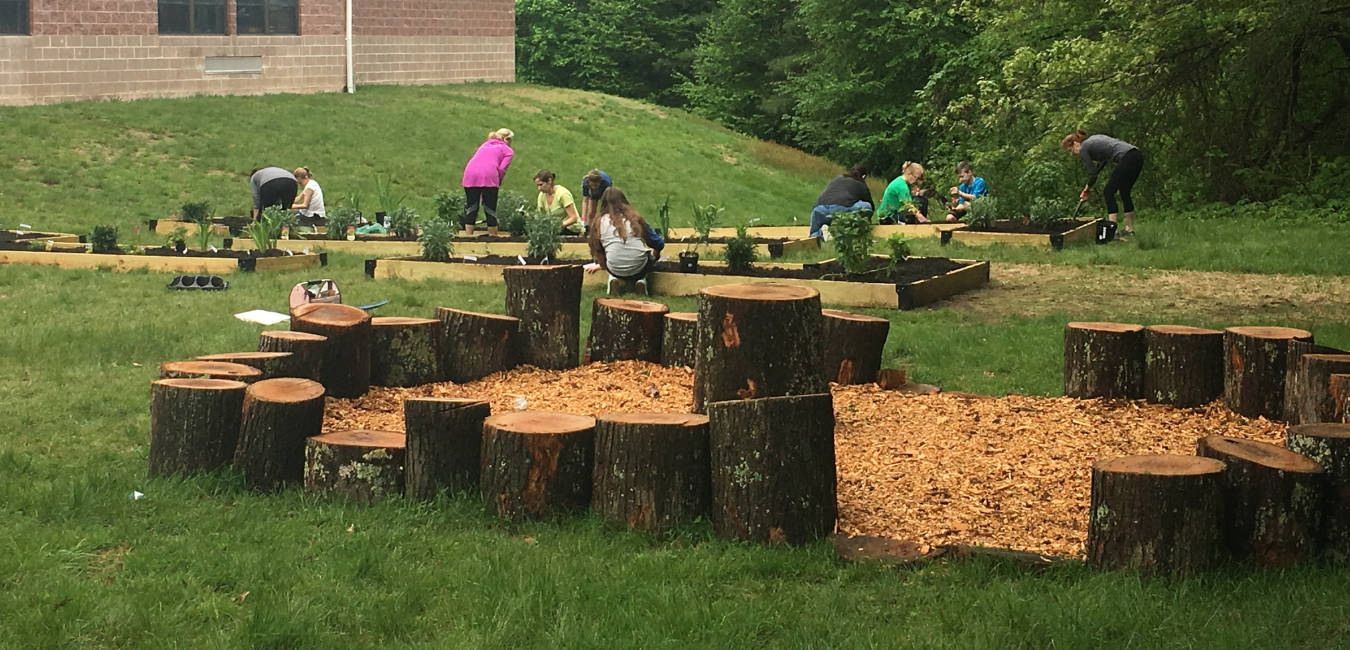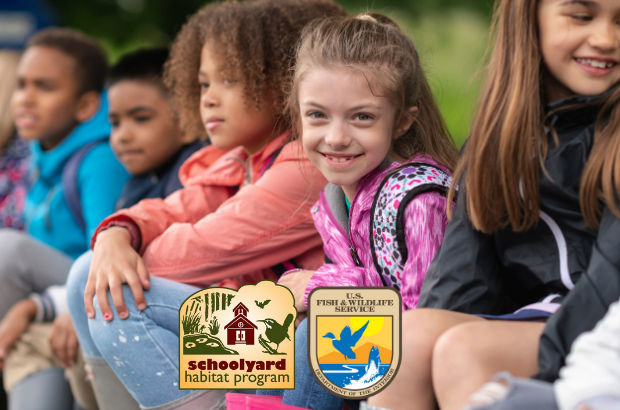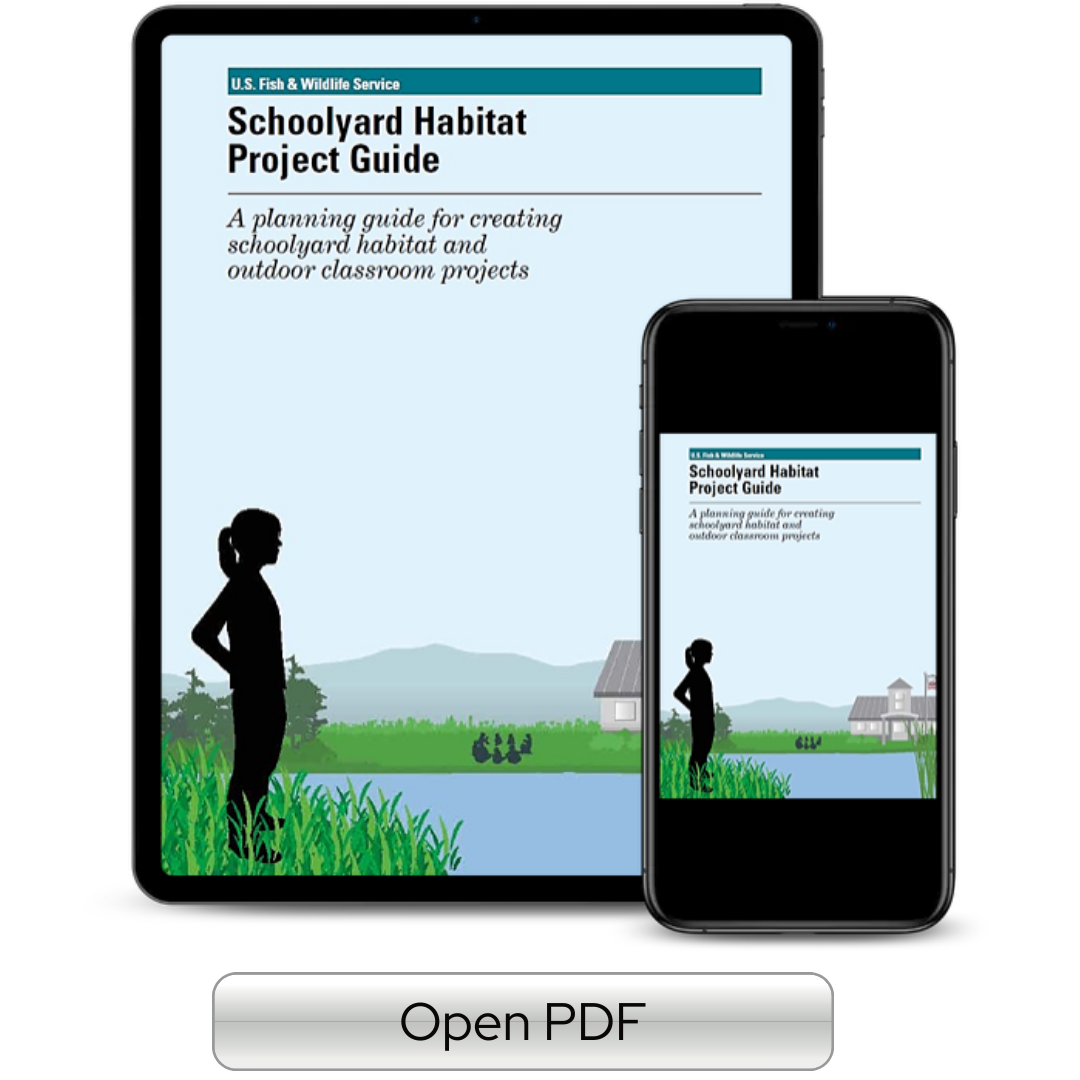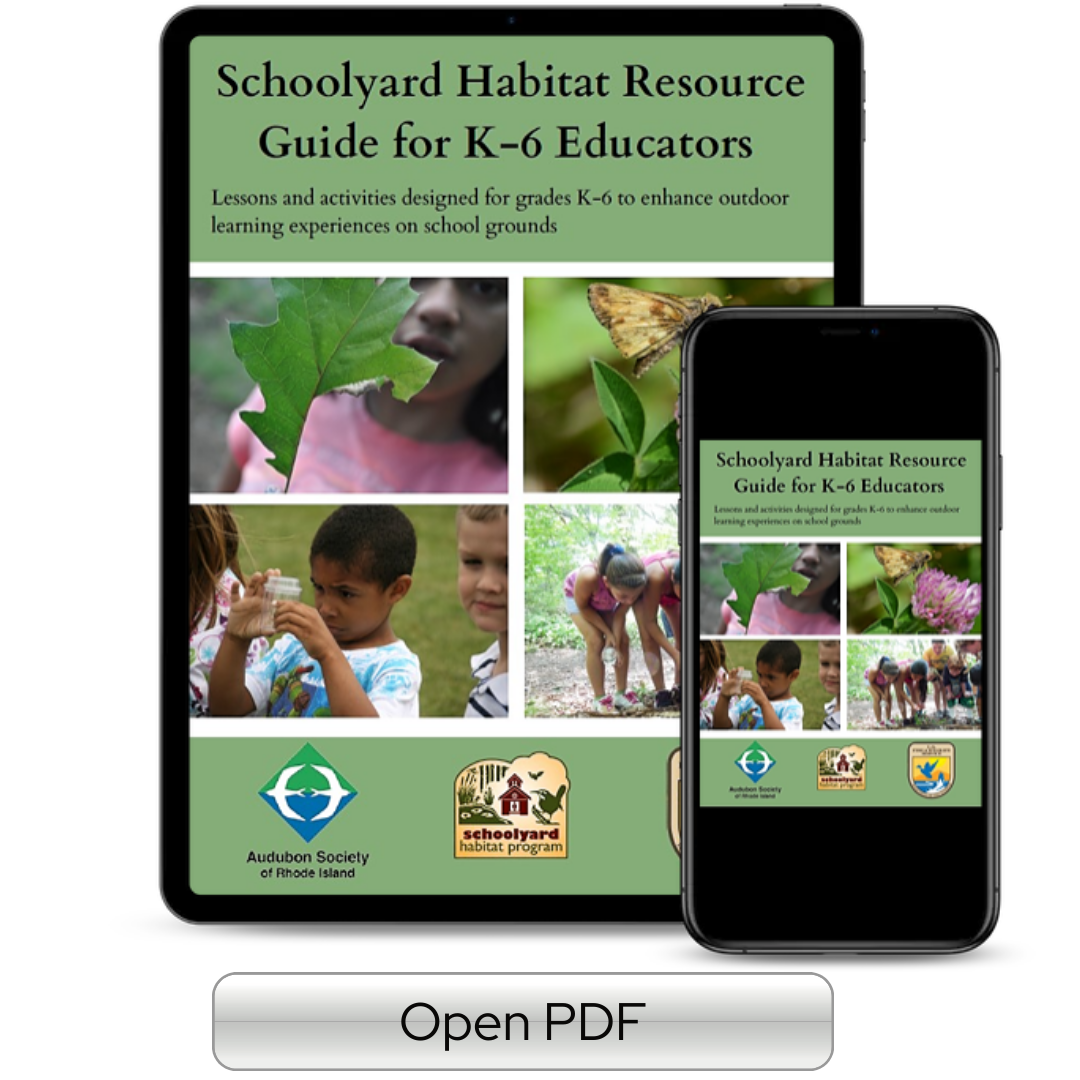The Audubon Schoolyard Habitat Resource Guide
Nature has always provided an engaging classroom for children. Students unplug from screens and technology, get their hands dirty, use their senses in learning, and discover first-hand the amazing and inter-connected world of insects, birds, animals and plants. Wild spaces also provide opportunities for exercise, fresh air and a connection to nature that is so valuable for physical and mental health. Across the country, educators are embracing schoolyard habitats to enhance student learning.
The Guides
The Audubon Society of Rhode Island and the U.S. Fish & Wildlife Service (Service) have collaborated to bring resources to teachers, parents and after-school providers that promote and support the development of schoolyard habitats and outdoor learning in Rhode Island.
-
The U.S. Fish and Wildlife Service’s Schoolyard Habitat Project Guide provides resources and ideas to undertake and complete successful schoolyard habitat projects.
What is included?
• Step-by-step guidance on how to initiate, create and incorporate a schoolyard habitat
• Stories and examples from urban and suburban schools
• Project pathways for different types of habitats
• Spanish version available!
-
-
Audubon Society of Rhode Island educators have developed a comprehensive Audubon Schoolyard Habitat Resource Guide with science investigations, activities, and nature explorations that encourage outdoor learning for students in grades K – 6. It complements the national Schoolyard Habitat Program led by the Service.
What is included?
• Age-appropriate, interactive activities linked to science, as well as language arts, math, art and physical education
• Each activity page identifies objectives and the Next Generation Science Standards and Cross-curricular Connections.
• Helpful tips for teaching children outdoors and safety guidelines
• A suggested list of science tools that are helpful for schoolyard investigations
• An extensive list of resources, including citizen science projects, field guides and children’s literature
-
About Schoolyard Habitats
-
What is a schoolyard habitat?
A schoolyard habitat project restores native wildlife habitat on school grounds, and often includes an outdoor classroom with seating, tables and shade structures. Teachers and students plan, create and sustain habitat for wildlife and learn about the environment. Activities such as weather studies, wildlife observation, nature scavenger hunts, soil science, and data collection are all hands-on learning projects that support studies in science, math, language, art and physical education.
In Rhode Island, Audubon and the Service work with schools that have demonstrated readiness to create a schoolyard habitat and integrate the new outdoor teaching space into school curriculum. They have collaborated to bring funding and technical assistance to teachers, parents and after-school providers that promote and support the development of outdoor learning. Since 2016, when the partnership was established, Audubon and the Service have successfully collaborated with five schools across the state to develop schoolyard habitats, and are looking to expand the program.
-
Why are schoolyard habitats so beneficial for students?
• Schoolyard habitats promote academic achievement through hands-on, experiential learning and by enhancing the cognitive and emotional processes important for learning.
• Natural areas promote child-directed free play that is imaginative, constructive, sensory-rich and cooperative.
• Access to nature through schoolyard habitats can enhance mental health and well-being. They promote social-emotional skill development.
• Schoolyard habitats promote physical activity by offering a variety of active play options that engage children of varying ages and fitness levels.























